Countertops–Which Option Is Best For You?
May 20th, 2021 | by Cassandra Sage | Posted in UncategorizedThere are many types of countertops, and each has its pros and cons, including the price. Since this surface can have a big impact on how your kitchen looks, you might be wondering: What’s the best countertop for my new home or remodel?
That depends, of course, on your sense of style and your cooking preferences. Whether you are looking to renovate your kitchen or are building a custom home and wondering which option is best; here is a guide to the various types of countertops and how to figure out which one is right for you.
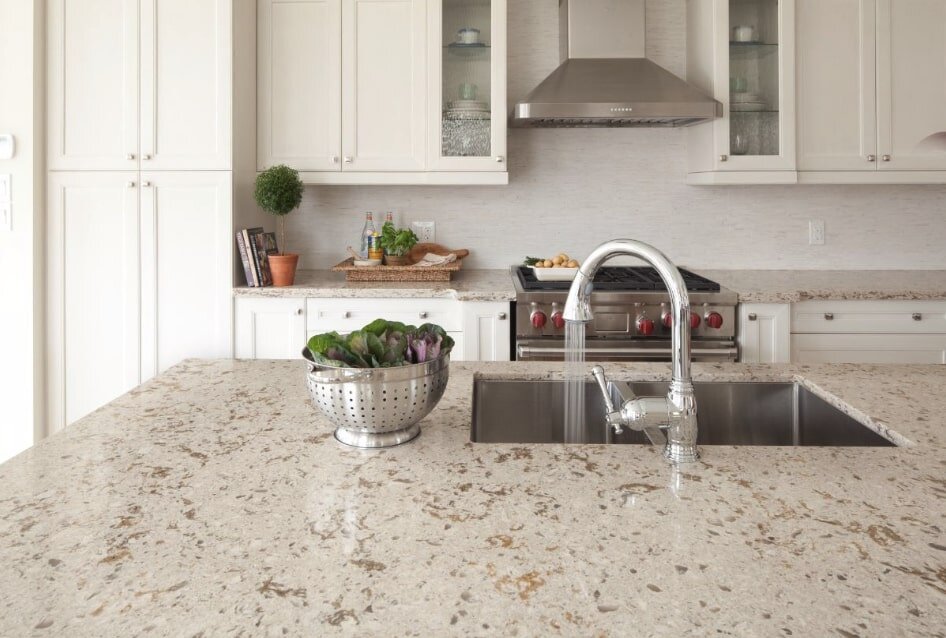
Quartz Countertops
Sometimes known as “engineered stone” is a composite, consisting of quartz crystals held together with a binder, often resin. They look like natural stone countertops, but these engineered quartz countertops have some additional benefits you can’t get naturally. Those benefits have led to quartz being one of the most popular countertop materials in the past year.
Cost: $80 to $125 per square foot installed
Pros:
● Durable, less prone to chipping than natural stone ● Low maintenance; doesn’t require sealing ● Comes in vibrant colors in addition to patterns that look like granite and marble
Cons:
● May have visible seams where pieces meet ● It can scratch and will melt if hot pans are placed on the surface
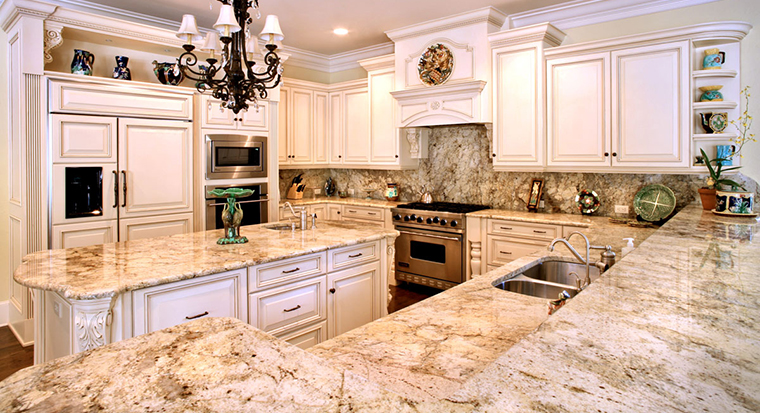
Granite Countertops
Granite is a natural stone countertop material which has been highly prized in the kitchen for many years. It is available in a wide variety of colors and blends well with many different flooring and wall designs. Granite countertops are becoming more and more common thanks to their increased availability and affordability.
Cost: Cost: $75 to $200 per square foot installed
Pros:
● Adds non- depreciating value to your home ● Durable ● Non- porous and sanitary ● Each slab is unique and available in a variety of colors and patterns ● Stain-, heat-, scratch- and water-resistant when properly sealed
Cons:
● Can be expensive; rare colors and veining adds to the cost ● Requires sealing about every 10 years ● Edges and corners can chip if hit by a large heavy object ● Very heavy; must be supported by sturdy cabinets
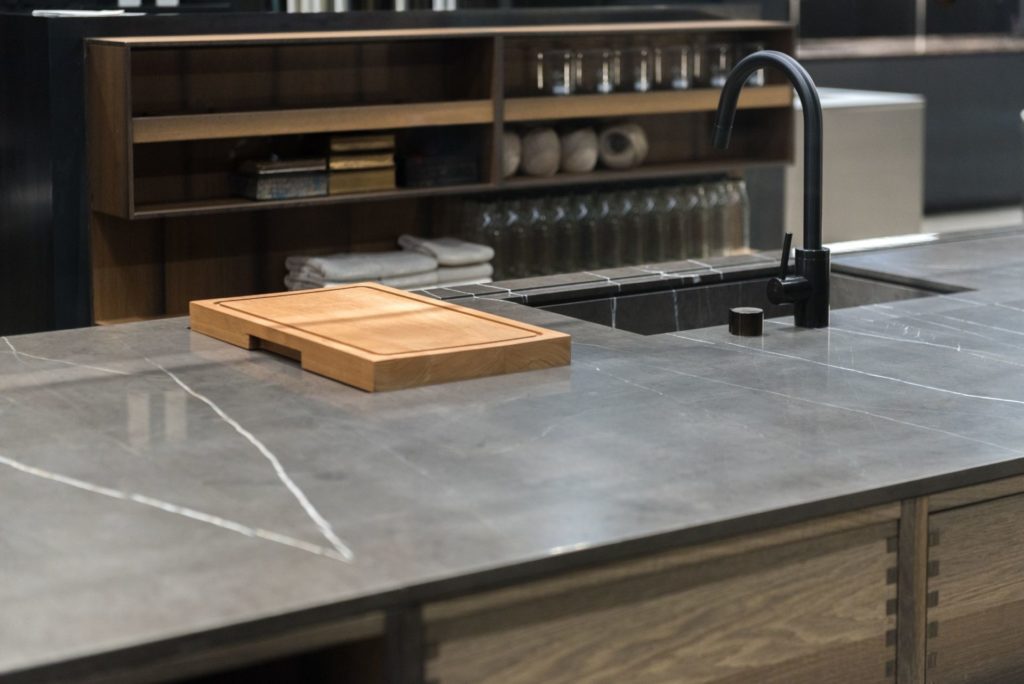
Soapstone Countertops
Soapstone is a natural stone which takes its name from the soft, almost soapy feel of its surface. There are two grades of soapstone – artistic and architectural – but only architectural soapstone is suitable for countertop use, as it is much stronger than artistic soapstone. It is naturally gray in color (usually darker gray, although lighter varieties exist) with veins of lighter color running through it. Soapstone has been used in kitchen countertops for centuries and looks particularly natural in a farmhouse-style kitchen.
Cost: Cost: $80 to $170 per square foot installed
Pros:
● Durable and ages well ● Heat- and water-resistant ● Low maintenance; doesn’t require sealing ● Small scratches can be easily repaired by sanding finely and applying mineral oil ● Pliable, unlikely to crack from too much weight ● Non-porous, easy to clean and unlikely to stain
Cons:
● Naturally soft, may scratch or chip more easily ● Requires regular polishing with oil ● Rarely comes in slabs more than 7 feet, requiring multiple slabs and increased install costs ● May have visible seams where pieces meet ● Limited range of colors; tends to darken with time
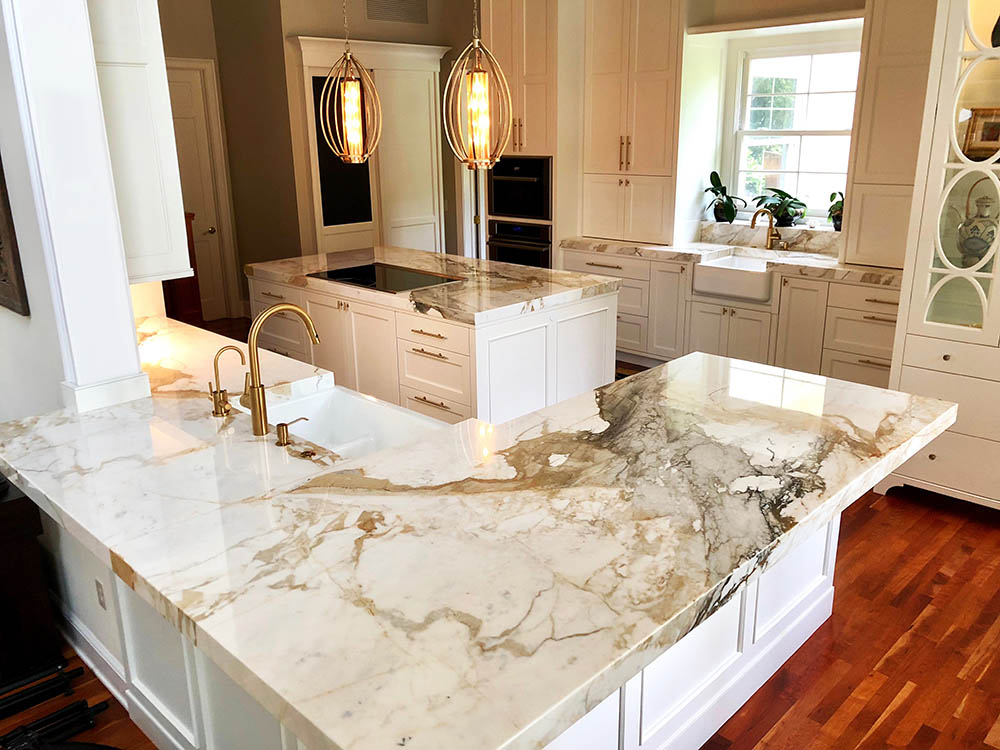
Marble Countertops
Long considered a sign of luxury, marble is a natural stone created by sediment under pressure, which develops a crystalline structure that allows it to be polished. It is not as hard as its cousin granite, but not as soft as soapstone, either. It can be found in a variety of natural colors, including white, black, gray, yellow, pink, and green, and sometimes with prominent veins of mineral deposits that are considered attractive.
Cost: Cost: $145 to $275 per square foot installed
Pros:
● Heat-resistant ● Classic look ● Available in a variety of colors ● Good for bakers; maintains a cool temperature for working with dough ● Unique and beautiful
Cons:
● Requires regular sealing ● Cuts and scratches easily ● Tough to wash out stains ● Damaged by acid, such as citrus juice, alcohol and coffee ● Very heavy; must be supported by sturdy cabinets
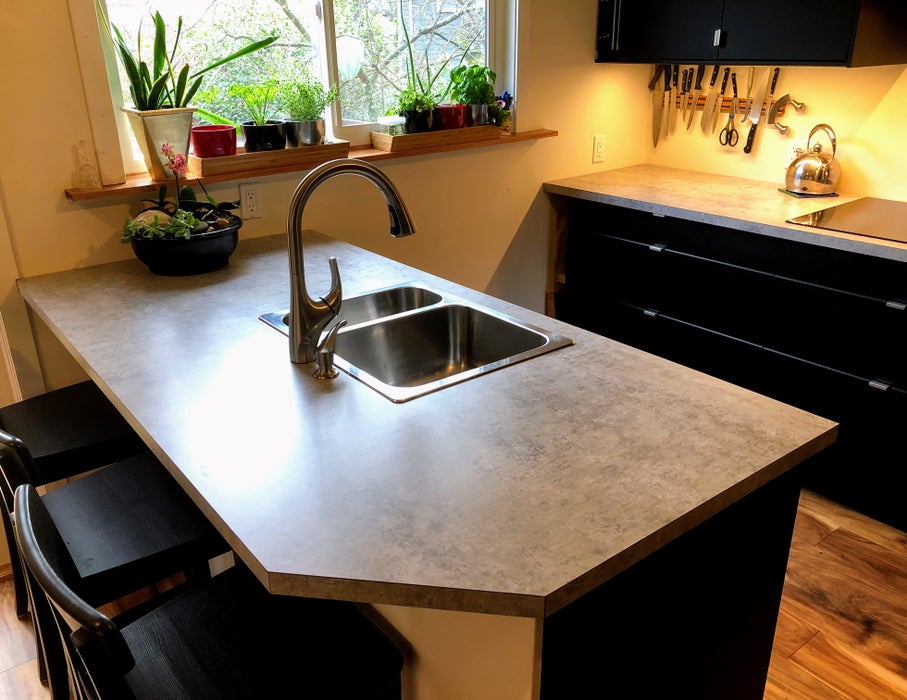
Laminate Countertops
Countertop laminate is made by combining layers of paper and resins into a single, semi-rigid plastic sheet. Brown Kraft paper (the same as paper grocery bags) is used for the bottom layers. A decorative sheet that bears the visible color and/or design of the laminate countertop goes in the middle and translucent sheets of paper form the top layer. Multiple sheets of paper are used in each layer and the total number of sheets varies and overall thickness depends on what type or grade of laminate is being manufactured. All paper layers are soaked in a resin, which serves as a glue and binder. The layers are then pressed together while cooked, which forces all the papers and resins to chemically bond into one plasticized sheet. These sheets can then be cut to size and glued to a plywood substrate on- site for custom laminate countertops or they can be bonded to laminate countertop particle board forms of various lengths that already include the backsplash and edge detail. These prefabricated laminate countertops allow for even faster and easier installation.
Cost: $40 to $80 per square foot installed
Pros:
● Inexpensive ● Low maintenance; doesn’t require sealing. ● Lightweight; doesn’t require the support of thick cabinets
Cons:
● Cuts and scratches easily ● Damaged by heat ● Wear and moisture exposure can cause layers to peel ● Visible seams where the pieces meet ● Difficult to repair when damaged ● Short lifespan ● Decreases value of home compared to other countertop options
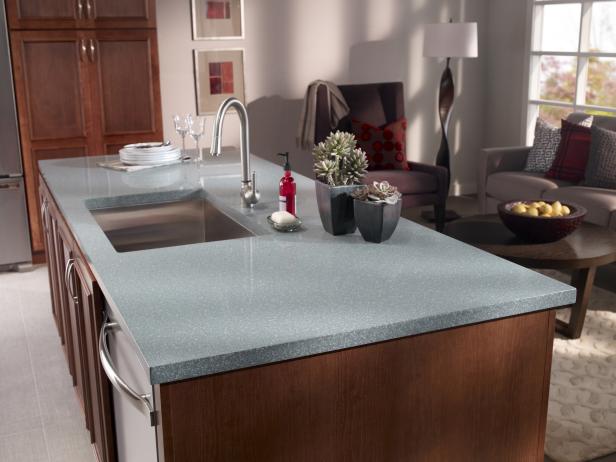
Solid Surface (Corian) Countertops
Originally invented by DuPont in the 1960s and marketed under the brand name Corian, solid surface countertops are made from acrylic and polyester blends. They were originally intended to mimic the look of natural stone, while being stronger and non-porous. When DuPont let their patent expire in the 1990s, a wave of different solid surface materials entered the market, including Hi-Macs, Staron, Hanex, Wilsonart, and Durat, amongst others. These brands mostly use the same recipe – DuPont’s original – but differ in the colors they offer.
Cost: $45 to $75 per square foot installed
Pros:
● Low maintenance; doesn’t require sealing ● Easy to clean ● Resistant to most stains ● Small scratches can be repaired ● Can be used for the counters, sink and backsplash to create a seamless look
Cons:
● Cuts and scratches easily ● Damaged by heat ● Not particularly natural looking ● Resale value of home is less than that of other materials
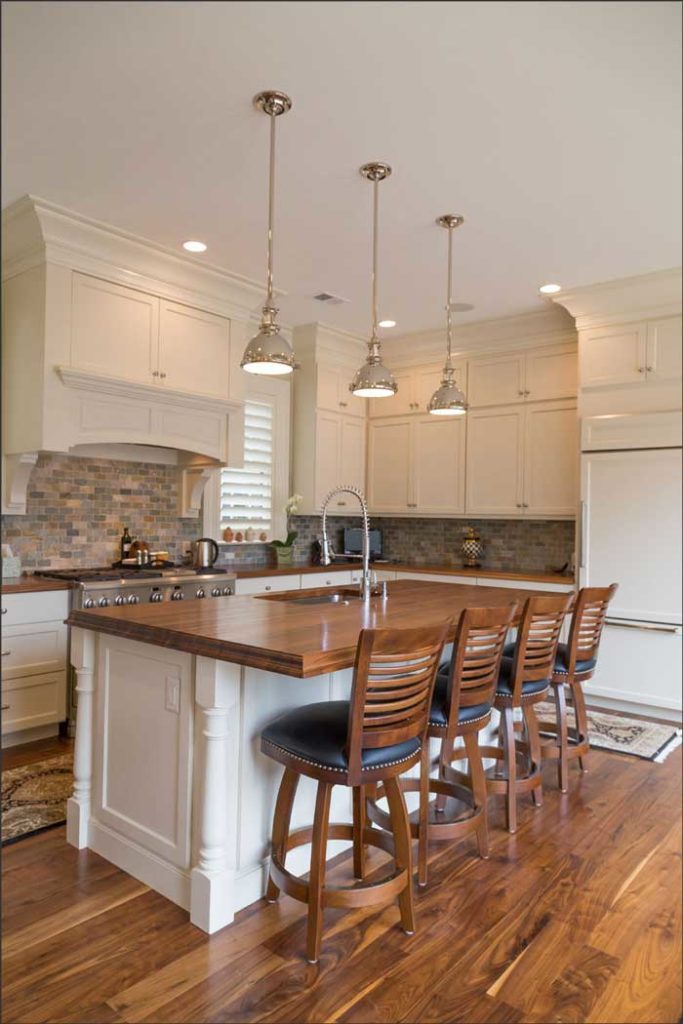
Butcher Block Countertops
Butcher block countertops are made up of glued strips of hardwood in a vast array of different types of wood. These inviting, rustic-looking countertops are rising fast in popularity, as farmhouse-inspired design is trending everywhere. There are three basic styles of butcher block: end grain, edge grain, or face grain.
Edge grain is the most commonly used for countertops because it is strong and less expensive; it is created by gluing long boards together on their sides. By contrast, face grain consists of boards laid flat, which is less suitable for a heavily used kitchen countertop because it is easily susceptible to dents and cuts from chopping. End grain consists of small blocks arranged so that their ends are visible on the surface. It is gaining popularity as it is extremely resistant to cutting marks, but it is also the most expensive option.
Cost: $35 to $85 per square foot installed
Pros:
● Relatively inexpensive and easy to install ● Long-lasting if properly maintained ● Regular oiling can improve stain resistance ● Cuts and scratches can be sanded out ● Warm and natural appearance that works with a variety of designs ● Wood is naturally antimicrobial
Cons:
● Cuts and scratches easily ● Not completely stain resistant ● Can be damaged by heat ● Susceptible to water stains and warping ● Needs regular oiling
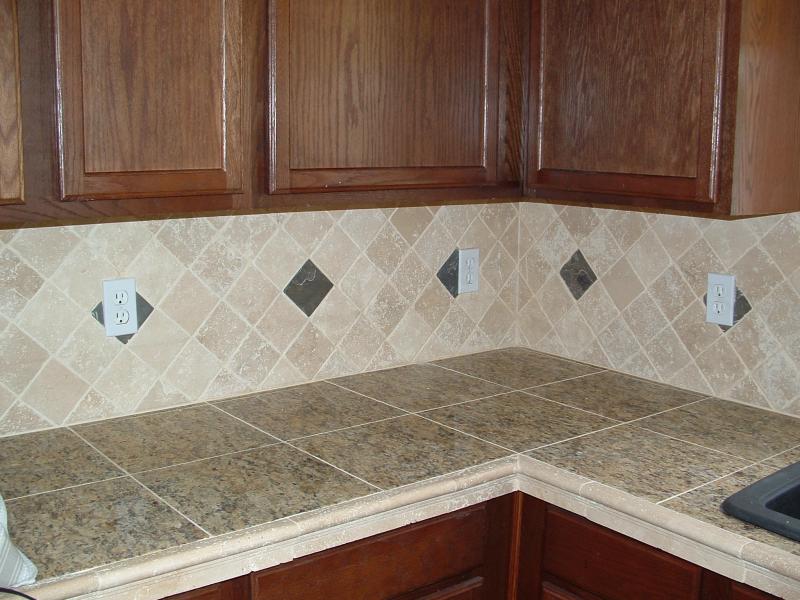
Tile Countertops
Tile countertops are typically made of ceramic tiles (themselves made of fired clay), which are usually applied to a plywood substrate or on top of an existing laminate countertop, since tile by itself can be too thin for countertop use. These counters were popular in the 70s and 80s, disappeared for a while, and have recently come back into fashion.
Cost: $35 to $80 per square foot installed
Pros:
● Durable ● Customizable; available in a variety of colors and sizes ● Inexpensive ● Very heat resistant
Pros:
● Requires regular sealing ● Cracks easily; difficult to find a replacement tile to match ● Grout stains easily; hard to keep grout joints clean ● Standing moisture can damage it and contribute to bacteria growth ● Uneven tiles can make it difficult to balance a cutting board or roll out dough
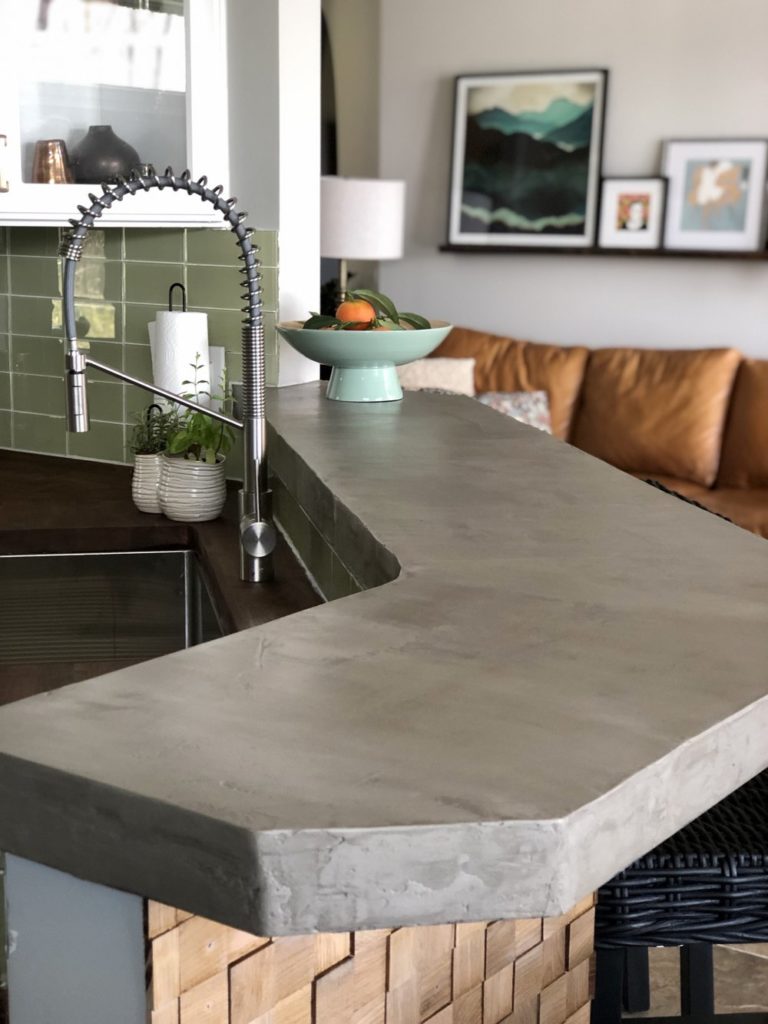
Concrete Countertops
Countertops made from concrete – generally with pigment added to make them look less like a sidewalk! They are then sealed to make them non-porous and heat/stain resistant. Concrete countertops have been in style for a while now, especially among people who like that industrial or rustic look, and they don’t appear to be losing popularity.
Cost: $85 to $155 per square foot installed
Pros:
● Durable ● Heat-resistant ● Customizable ● Can be made to look seamless ● Long Lasting
Cons:
● Expensive due to customization ● Requires regular sealing ● Stains easily; can absorb moisture ● Small cracks can develop over time ● Very heavy; must be supported by sturdy cabinets